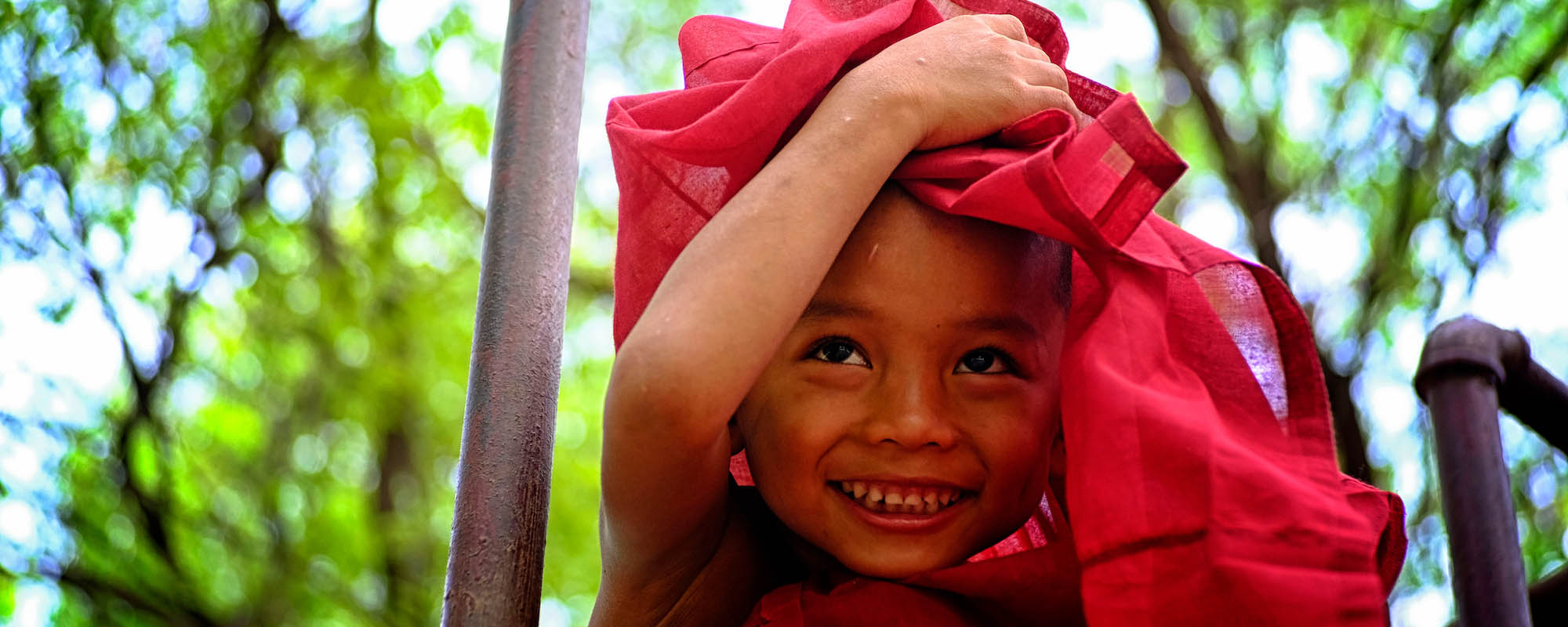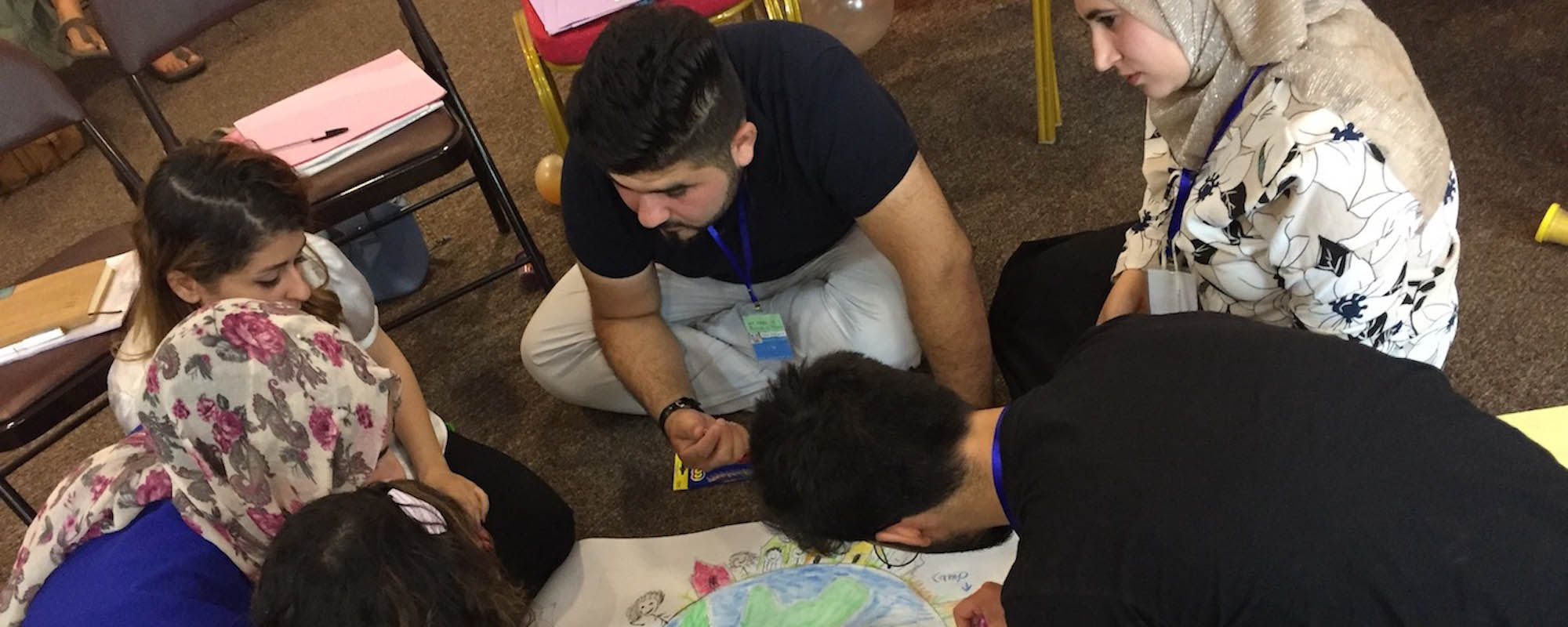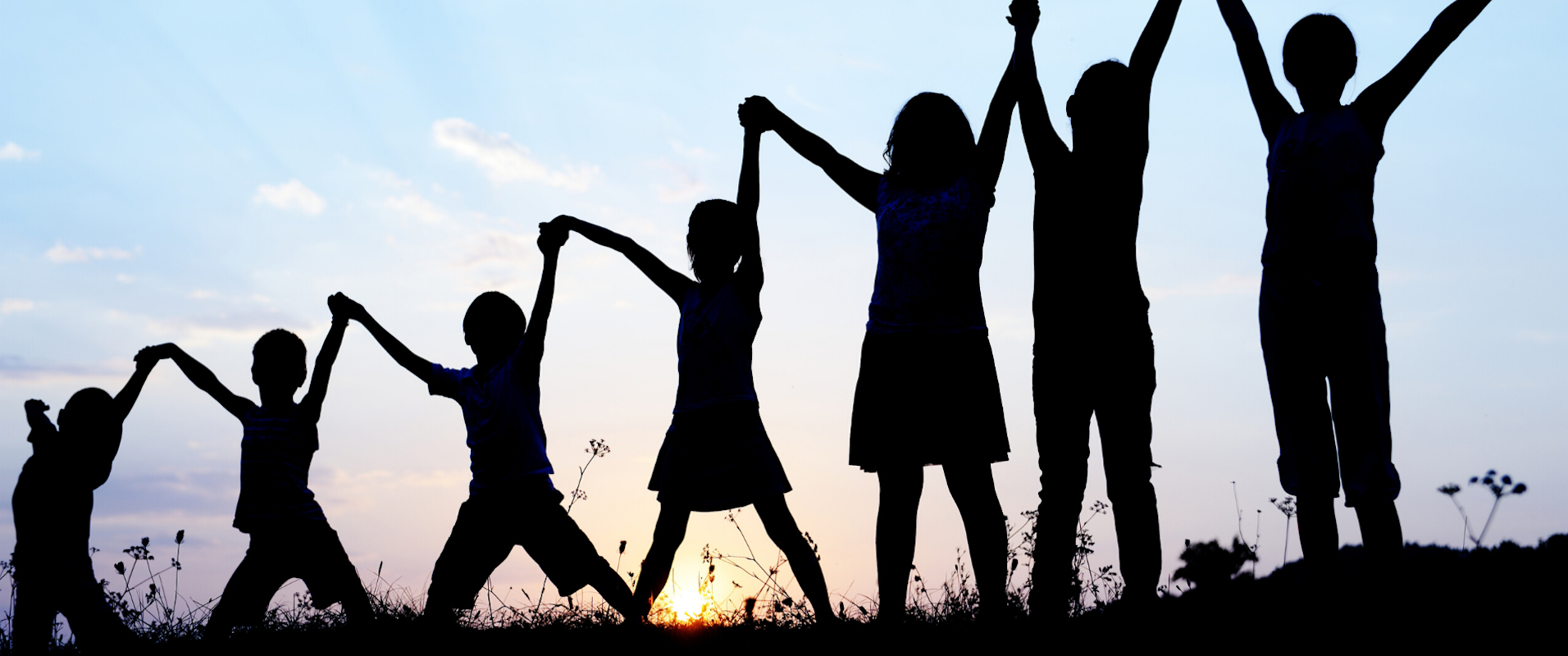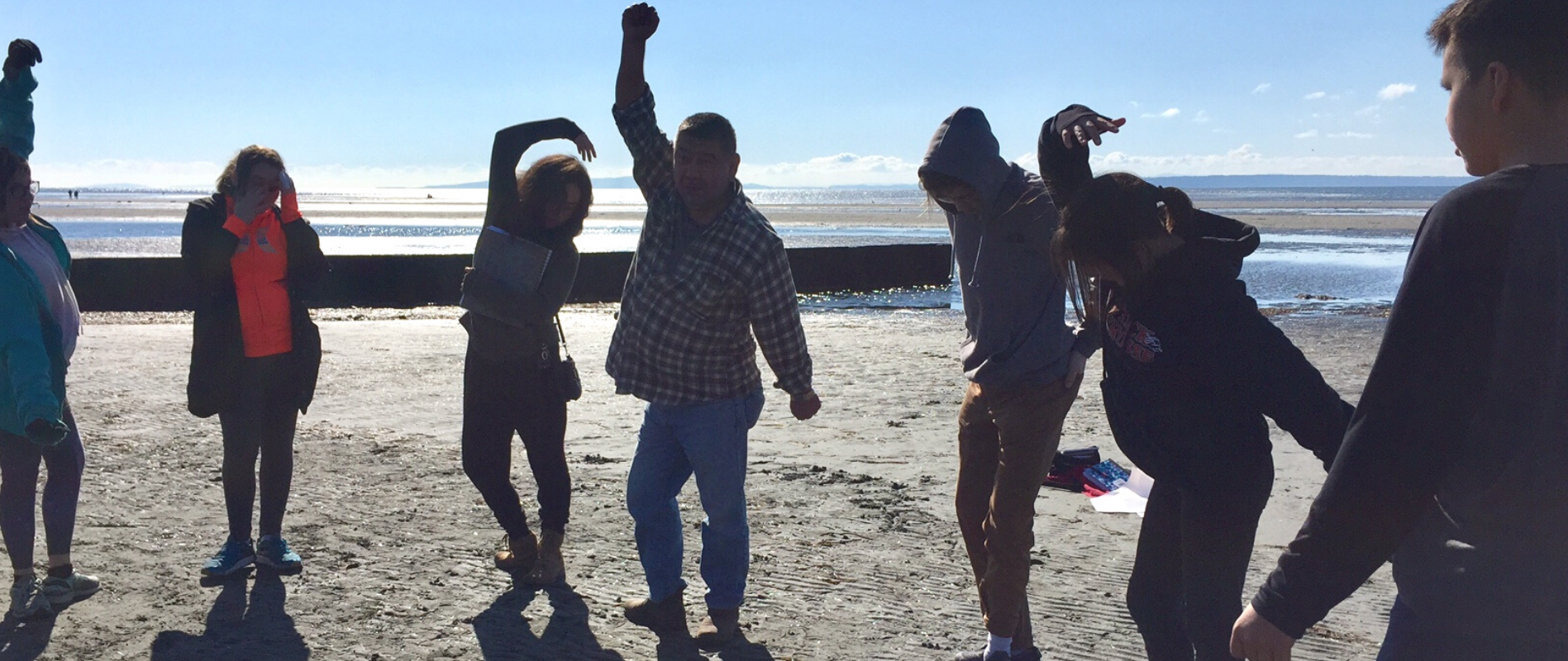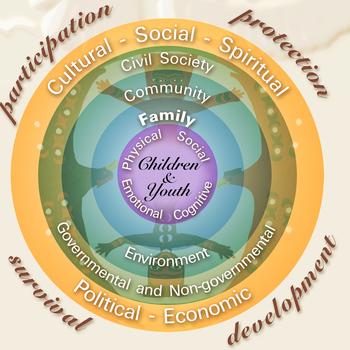
"Then I was standing on the highest mountain of them all, and round about beneath me was the whole hoop of the world. And while I stood there, I saw more than I can tell and I understood more than I saw; for I was seeing in a sacred manner the shape of all things in the spirit, and the shape of all shapes as they must live together like one being. And I saw that the sacred hoop of my people was one of many hoops that made one circle, wide as daylight and as starlight, and in the center grew one mighty flowering tree to shelter all the children of one mother and one father. And I saw that it was holy." - Black Elk, Lakota Sioux, USA
The Child Rights Social Ecology Model highlights opportunities to further strengthen systems to better protect and support children and youth. Children and Youth are at the center of the Child Rights ecology circle. We establish partnerships and other cooperative relations between the different circles to support children. We extend the community of support to make it as inclusive as possible and promote unity of concern and support around children. A common understanding of child rights and shared information about and from children can be strong unifying factors.
The Child Rights Social Ecology Model identifies specific child rights risks and protective factors that change over the course of the lifespan and are unique to cultural and social contexts. Ideally, the systems interacting with young people work together to fully support and protect young people at the centre. However, when one system breaks down or is completely lost, the other systems have added pressure or responsibility.
When the systems are connected, it helps the child establish more positive connections and positive relationships within their environments. This leads to greater resilience and improved and holistic child development.
The Child Rights Ecology builds on Urie Bronfenbrenner’s (1979) social ecology of childhood developed by adding a child rights, “strength based” and culturally grounded developmental lens. Each child is unique and each child’s social ecology is also unique. A child’s social ecology depends on the systems in that child’s life and how these systems work together. It also relies on the factors in the child’s environment (e.g. people, activities, places, culture, religion, circumstances, threats, and opportunities). The child's social ecology depends on how the child interacts with his or her inner and outer worlds. Using the Child Rights Ecology Model can help identify the assets, capacities and opportunities for the child in their systems of support and social-cultural context that support and protect young people and help establish a sense of dignity, belonging and justice.
Building on the CRC and Child Rights Social Ecology Model, IICRD developed the Circle of Rights methodology to give young people space to be involved in decisions that most affect them.
Child Rights Ecology and Child Protection
Increasingly, efforts to protect children are being understood as an interrelationship between risk and protective factors across the Child Rights ecology. Studies on protection in childhood have highlighted the key interplay between risk and protection as a mediator of a child’s development. Schonkoff and Phillips (2000) outline core concepts of children’s development that describe the relative influence of both risk and protection factors across the lifespan:
- Human development is shaped by a dynamic interplay between biology and experience
- Culture influences every aspect of human development and is reflected in childrearing beliefs and practices designed to promote healthy adaptation
- Children are active participants in their own development reflected in the intrinsic and human drive to master one’s environment and learn through experience
- Human development is shaped by the interplay between ongoing sources of vulnerability and sources of resilience
- The timing of early experience can matter, but more often than not, the child remains vulnerable to risks and open to protective factors throughout the early years of life and into adulthood
- The course of development can be altered in childhood by effective interventions that change the balance between risk and protection, thereby changing the odds in favour of more adaptive outcomes.

